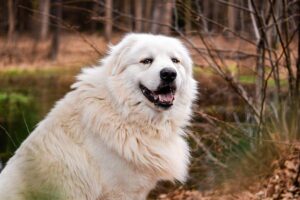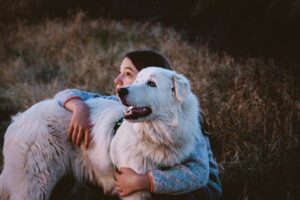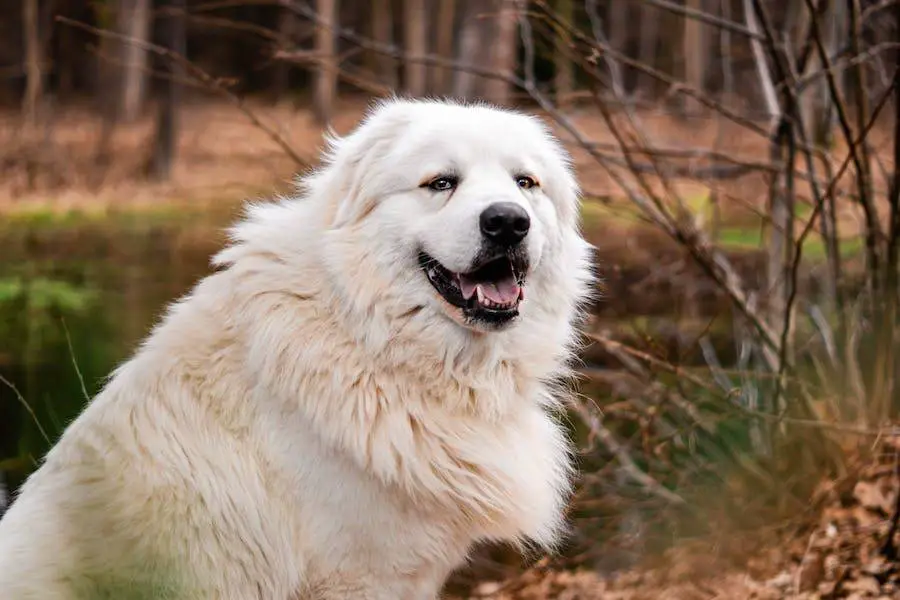Table of Contents
The Great Pyrenees, a majestic and protective breed, is renowned for its prowess in guarding livestock.

However, their inherent protective instincts can sometimes manifest as aggressive behavior toward the very animals they are meant to protect. If you find yourself in such a predicament, don’t panic.
This comprehensive guide provides practical strategies to help manage such behaviors.
Understanding the Natural Instincts of the Great Pyrenees
The first step towards addressing the issue is understanding the inherent instincts of the Great Pyrenees. Bred as livestock guardian dogs, they possess a strong protective drive.
This instinct, although beneficial in many circumstances, can sometimes lead to aggressive behavior towards unfamiliar animals.
Recognizing this instinctive behavior as a natural part of their genetic makeup can help owners approach the situation with more empathy and patience.
It’s important to remember that aggression may not necessarily stem from hostility but rather from an ingrained instinct to protect.
Training Your Great Pyrenees
Training your Great Pyrenees to coexist peacefully with livestock is a vital step in preventing aggressive behavior.
This breed comes with a strong protective instinct, and without proper training, they may exhibit unwanted behaviors towards the animals they’re meant to guard.
Here are some detailed strategies to successfully train your Great Pyrenees:
Establishing Boundaries
One of the first things you’ll want to teach your Great Pyrenees is where they can and cannot go.
Establish clear physical boundaries within your property, especially around the livestock areas. You can use fences or natural barriers to mark these areas.
Start by walking your dog around the perimeters of these boundaries on a leash, using consistent verbal commands like “leave it” or “back” when they attempt to cross into the restricted area.
Reward them with treats or praise when they follow your command and back away from the boundary.
As your dog starts to understand this concept, you can gradually increase the challenge by introducing distractions, such as allowing the livestock to move freely in their area.
Continue to reinforce the boundary rules during these sessions.
Positive Reinforcement Techniques

Positive reinforcement techniques involve rewarding your dog for displaying desirable behavior.
This encourages them to repeat the behavior in the future. The rewards can be in the form of treats, verbal praise, or petting.
For instance, if your Great Pyrenees remains calm and doesn’t react aggressively when livestock are nearby, immediately reward them.
This will help them associate calm behavior around livestock with positive outcomes.
It’s important to be consistent and timely with your rewards. The reward should come immediately after the desired behavior so that your dog can make the connection between the behavior and the reward.
Socialization Training
Socialization is key in helping your Great Pyrenees get accustomed to being around livestock without exhibiting aggressive behavior. This should be done gradually and under controlled circumstances.
Start by introducing your dog to the livestock at a safe distance, rewarding them for calm behavior.
Gradually decrease the distance over time, always ensuring that both your dog and the livestock are safe during these sessions.
During these training sessions, it’s crucial to observe your dog’s body language closely. Any signs of stress or aggression should be addressed immediately.
This could mean increasing the distance again or ending the session if your dog becomes too anxious.
Obedience Training
Obedience training is another essential aspect of training your Great Pyrenees.
Teaching them basic commands like “sit,” “stay,” “come,” and “leave it” can be incredibly useful in managing their behavior around livestock.
Start with short training sessions and gradually increase the duration as your dog’s attention span improves. Always end each session on a positive note to keep the training experience enjoyable for your dog.
Remember, training a Great Pyrenees requires patience and consistency. It’s a gradual process, and there might be setbacks along the way.
But with persistence, your Great Pyrenees can learn to live peacefully with livestock.
Gradual Introduction to Livestock
Introducing your Great Pyrenees to your livestock should be a slow and controlled process. Start by allowing your dog to observe the animals from a distance.
Over time, gradually decrease this distance under close supervision. This method gives your dog time to familiarize themselves with the livestock without feeling threatened or overwhelmed.
Supervised interactions are vital even after the initial introductions. This allows for immediate intervention and correction of any unwanted behavior.
Creating a Secure Environment
Providing a safe and secure environment is another key strategy in managing aggressive behaviors.
Proper fencing around your property can prevent your Great Pyrenees from wandering off and also protect your livestock from potential attacks.
Ensure that the fencing is sturdy and high enough to withstand the size and strength of your dog.
Also, ensure both your Great Pyrenees and the livestock have enough space to move freely. Cramped spaces can lead to stress and heightened aggression in dogs.
Using Distraction Techniques

Distraction techniques can be highly effective in deterring your dog from attacking livestock.
Engage your Great Pyrenees with toys, treats, and other forms of enrichment to keep their attention away from the livestock.
Regular physical and mental stimulation is crucial for this breed’s well-being and can help keep them occupied and less likely to bother the livestock.
This could include walks, play sessions, or training exercises that challenge their mind.
Seeking Professional Help
If your Great Pyrenees continues to exhibit aggressive behavior towards livestock despite your best efforts, it might be time to seek professional help.
A professional canine behaviorist can provide tailored strategies based on your dog’s specific needs and behaviors. Enrolling your dog in obedience classes can also be beneficial.
These classes often cover basic commands as well as more complex behaviors, which can be especially useful in controlling your dog around livestock.
Regular Health Check-ups and Spaying/Neutering
Ensuring your Great Pyrenees is in good health can also play a part in managing aggressive behavior. Regular vet check-ups can help identify any health issues that might be contributing to aggression.
Conditions such as pain, illness, or hormonal imbalances can cause irritability or aggression in dogs. Additionally, spaying or neutering your Great Pyrenees can help control aggressive behavior.
These procedures often reduce territorial and aggressive tendencies in dogs, making them more manageable around livestock.
Continuous Monitoring
Continual observation of your dog’s behavior around the livestock is crucial. This helps you identify any signs of aggression early, allowing for prompt intervention.
Regular training sessions and continued socialization with the animals are also key to reinforcing good behavior and discouraging aggression.
Conclusion
Managing a Great Pyrenees around livestock can be challenging, but it is certainly achievable with understanding, training, and patience.
The strategies outlined in this article can help guide you through the process, ensuring a peaceful coexistence between your Great Pyrenees and your livestock.
Always remember, each dog is unique, and what works for one Great Pyrenees may not necessarily work for another. Patience and consistency are key in managing their behavior around livestock.

